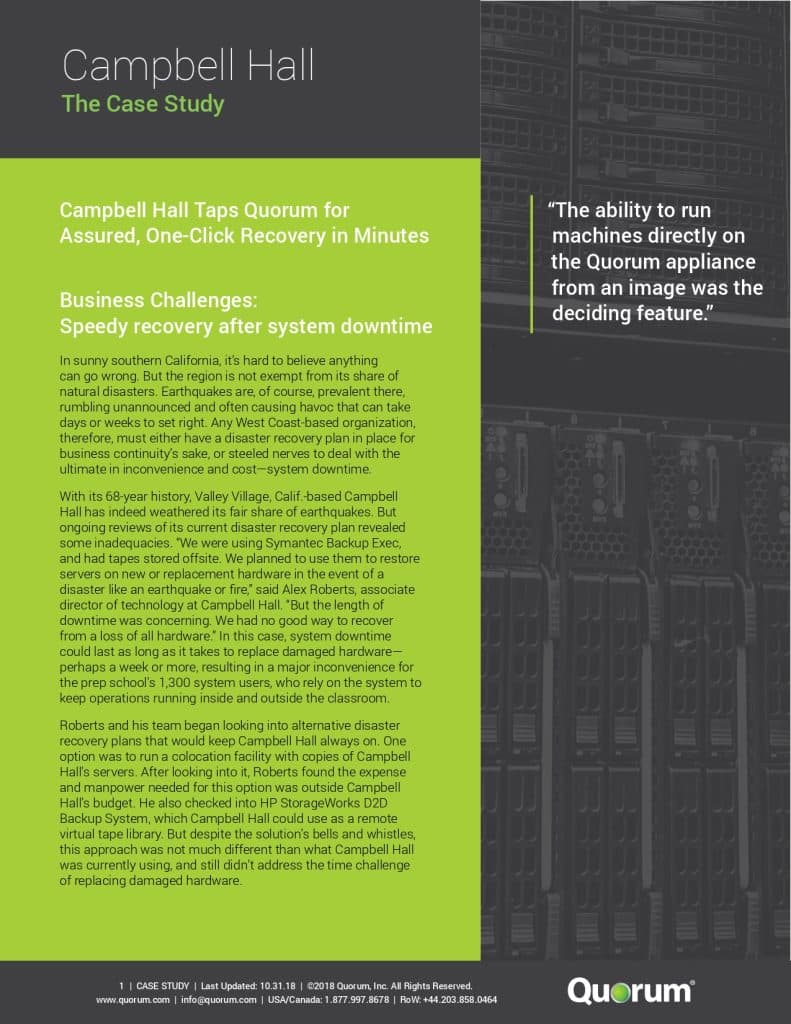
Business Challenges: Speedy recovery after system downtime
In sunny southern California, it’s hard to believe anything can go wrong. But the region is not exempt from its share of natural disasters. Earthquakes are, of course, prevalent there, rumbling unannounced and often causing havoc that can take days or weeks to set right. Any West Coast-based organization, therefore, must either have a disaster recovery plan in place for business continuity’s sake, or steeled nerves to deal with the ultimate in inconvenience and cost—system downtime.
With its 68-year history, Valley Village, Calif.-based Campbell Hall has indeed weathered its fair share of earthquakes. But ongoing reviews of its current disaster recovery plan revealed some inadequacies. “We were using Symantec Backup Exec, and had tapes stored offsite. We planned to use them to restore servers on new or replacement hardware in the event of a disaster like an earthquake or fire,” said Alex Roberts, associate director of technology at Campbell Hall. “But the length of downtime was concerning. We had no good way to recover
from a loss of all hardware.” In this case, system downtime could last as long as it takes to replace damaged hardware—perhaps a week or more, resulting in a major inconvenience for the prep school’s 1,300 system users, who rely on the system to keep operations running inside and outside the classroom.
Roberts and his team began looking into alternative disaster recovery plans that would keep Campbell Hall always on. One option was to run a colocation facility with copies of Campbell Hall’s servers. After looking into it, Roberts found the expense and manpower needed for this option was outside Campbell Hall’s budget. He also checked into HP StorageWorks D2D Backup System, which Campbell Hall could use as a remote virtual tape library. But despite the solution’s bells and whistles, this approach was not much different than what Campbell Hallwas currently using, and still didn’t address the time challenge of replacing damaged hardware.

